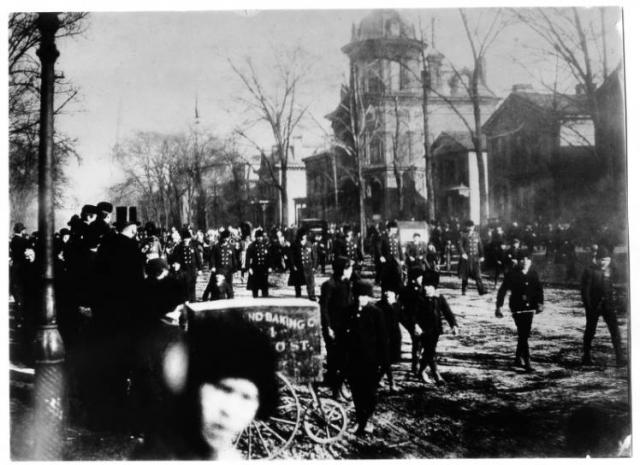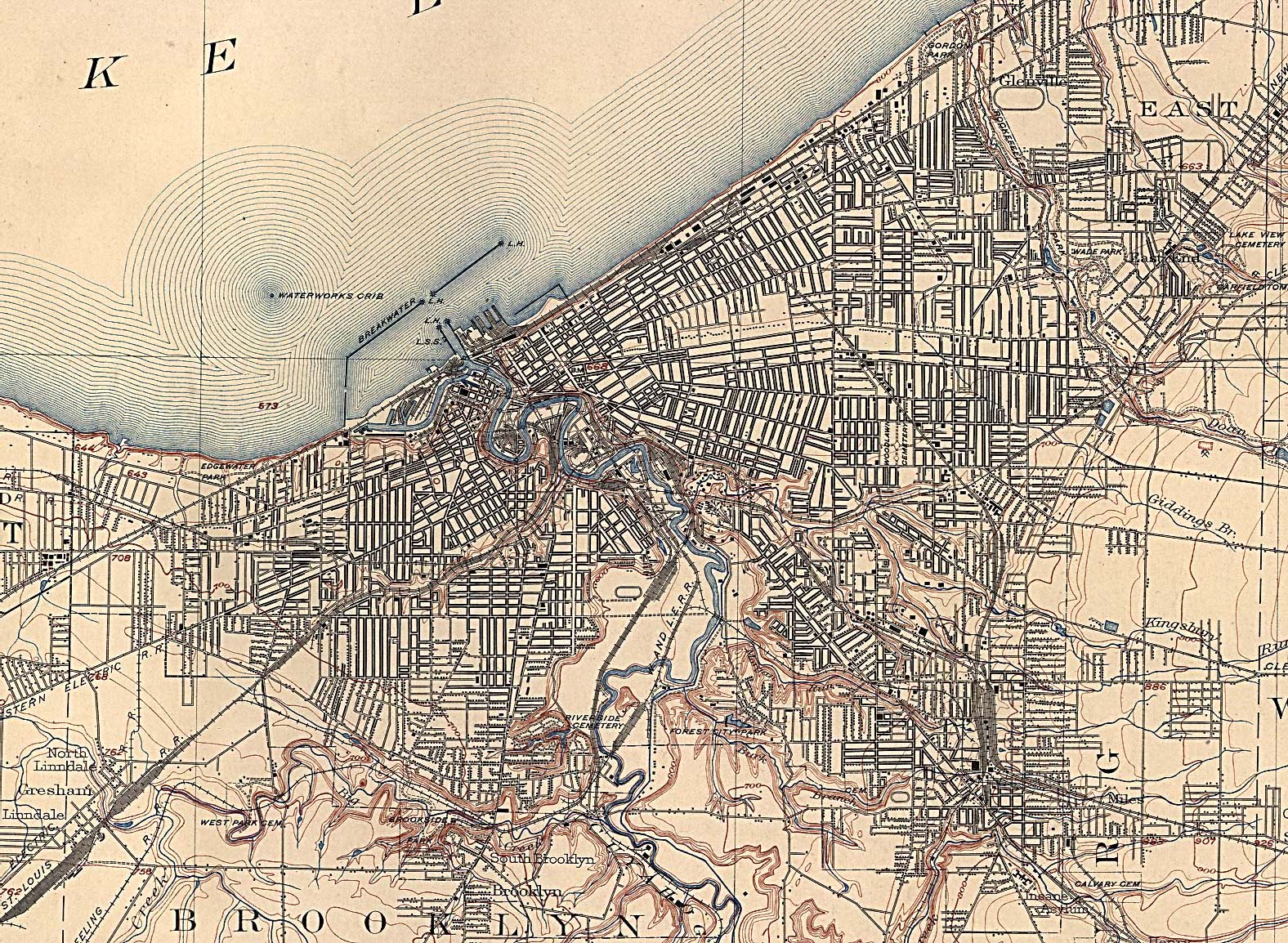GERMANS formed one of Cleveland's largest and most influential nationality groups in the 19th and 20th centuries. Although not as large as the German communities in some northern cities, the local community had an important influence on the city's economic, educational, and cultural life. Cleveland and other lake cities lagged a few years behind Cincinnati and St. Louis in the influx of Germans, for both of these cities gained German immigrants via the riverways and the National Road. Prior to the opening of the OHIO AND ERIE CANAL, Cleveland's Germans were chiefly those of German descent from Pennsylvania, New York, and Maryland whose forebears had generally come to America before the Revolutionary War; many of Cleveland's early civic leaders, such as LEONARD CASE†, claimed German heritage of this kind. Germans began arriving in Cleveland in substantial numbers during the 1830s, first settling along Lorain St. in Brooklyn, and along Superior and Garden (Central Ave.) streets on the east side. As the city expanded during the 19th century, succeeding generations moved east, west, and south, eventually fusing with other elements of the total population.
We know from other records that Clamor and family members lived in the Lorain St area.
 |
| 1889 Euclid Avenue during a Washington's Birthday Parade |
Again, Clamor and family fit into these skilled craftsmen, as he was a Cabinetmaker, he had a son was a tailor, and another was a tinsmith, a son-in-law that was a blacksmith and another who was also a tailor.
Eugene Brueggeman has a bed that was made by Clamor that was passed down to his son Louis, then to the grand-son Rudolph, and then to Eugene the great grandson. Hopefully, I can get a picture to share with you all one day.
 |
| 1904 Map of Cleveland |

No comments:
Post a Comment